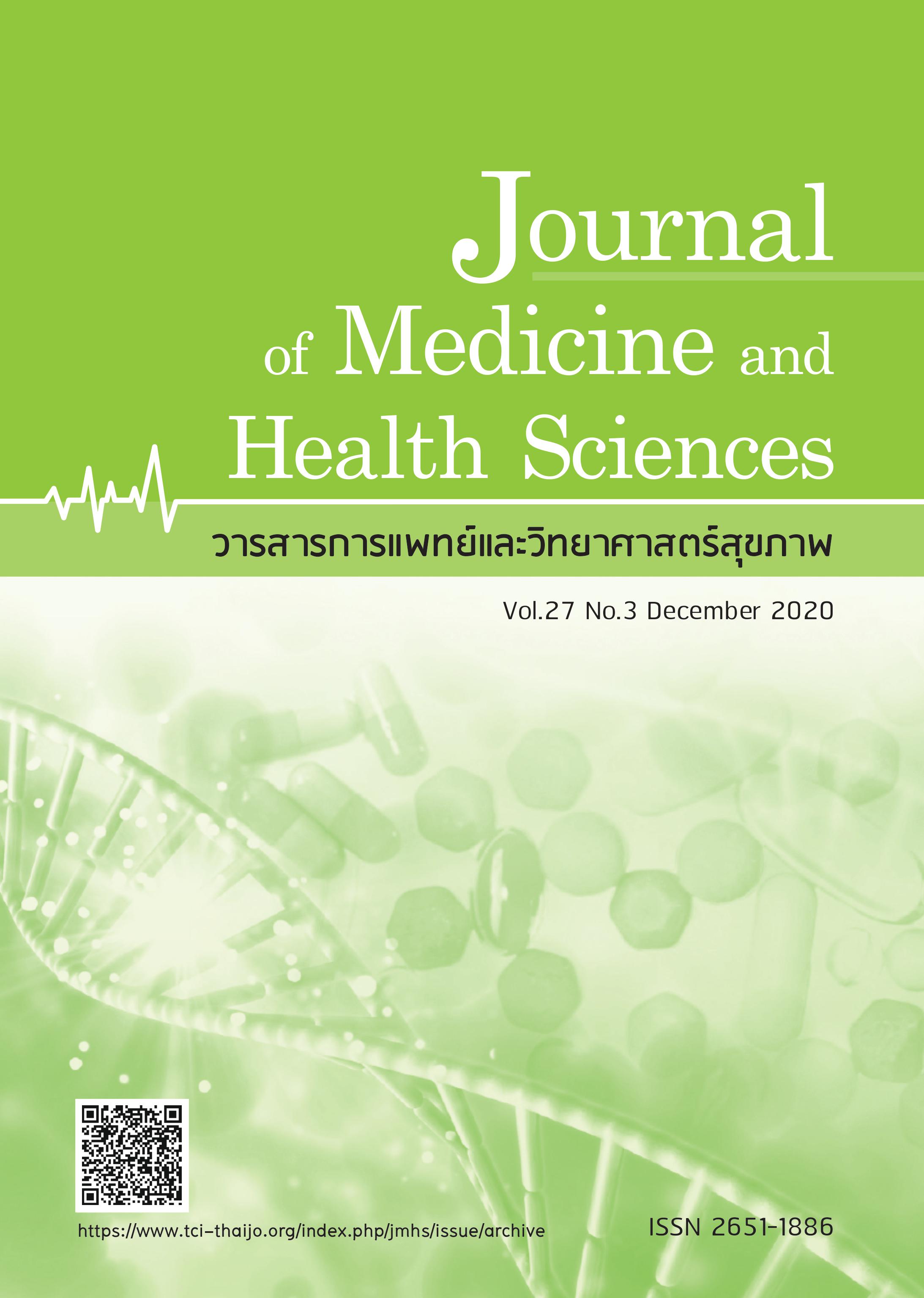Using 3D printing for preoperative planning in Maharat Nakhon Ratchasima Hospital: A case report of mandibular reconstruction
Keywords:
3D printing, 3D model, mandibular reconstruction, oral and maxillofacial surgeryAbstract
Abstract
Currently, the 3D printing is applicable in many fields. The objective of this case report is to show the application of 3D printing to oral and maxillofacial surgery planning at Maharat Nakhon Ratchasima Hospital, which is used as a role model for the treatment of oral and maxillofacial surgery patients. The proposed processes are constituted as follows. The patient’s CT image was processed into 3D STL image file. The obtained 3D image was symmetrically manipulated to be a new 3D image of normal structure face. The edited 3D image was validly checked by a radiologist and then it was printed out by the 3D printer. Finally, the dentists, oral
and maxillofacial surgery, used the 3D model for planning in the surgery operation of mandibular reconstruction. The patient had successfully undergone surgery to replace the right lower jaw. The surgery with the 3D printing aid reduced the processing time to 6 hours, while it took 7.5 hours in a traditional surgery without 3D printing supporting. This case will be further used as a role model for a treatment of patients.
References
2. Coward C. 3D printing. New York: Penguin Group; 2015.
3. Ventola CL. Medical Applications for 3D Printing: Current and Projected Uses. Pharmacy and Therapeutics 2014;39(10): 704-11.
4. Gross BC, Erkal JL, Lockwood SY, et al. Evaluation of 3D printing and its potential impact on biotechnology and the chemical sciences. Anal Chem 2014; 86(7): 3240–53.
5. Ciuffolo F, Epifania E, Duranti G, et al. Rapid prototyping: a new method of preparing trays for indirect bonding. Am J Orthod Dentofacial Orthop 2006; 129(1): 75–7.
6. Lipson H. New world of 3-D printing offers “completely new ways of thinking:” Q&A with author, engineer, and 3-D printing expert Hod Lipson. Institute of Electrical and Electronics Engineers Pulse 2013; 4(6): 12–4.
7. Hieu LC, Zlatov N, Vander Sloten J, et al. Medical rapid prototyping applications and methods. Assemb Autom 2005; 25(4): 284–92.
8. Banks J. Adding value in additive manufacturing: Researchers in the United Kingdom and Europe look to 3D printing for customization. Institute of Electrical and Electronics Engineers Pulse 2013; 4(6): 22–6.
9. Ursan I, Chiu L, Pierce A. Three-dimensional drug printing: a structured review. J Am Pharm Assoc 2013; 53(2): 136–44.
10. Cui X, Boland T, D’Lima DD, Lotz MK. Thermal inkjet printing in tissue engineering and regenerative medicine. Recent Pat Drug Deliv Formul 2012; 6(2): 149–55.
11. Rengier F, Mehndiratta A, Von Tengg-Kobligk H, et al. 3D printing based on imaging data: Review of medical applications. Int J Comput Assist Radiol Surg 2010; 5(4): 335-41.
12. Noorani R. 3D Printing Technology, Applications, and Selection. Boca Raton: Taylor & Francis Group; 2018.
13. Kumar LJ, Pandey PM, Wimpenny DI. 3D Printing and Additive Manufacturing Technologies. Singapore: Springer; 2019.
14. Hao S, Wang J, Wang F, et al. A case of 3D mirror and printing technology in the aid of resection and reconstruction of an adult mandibular ameloblastoma. Int J Clin Exp Med 2019; 12(4): 4392-7.
15. Jacek B, Maciejet P, Tomaszal P, et al. 3D printed models in mandibular reconstruction with bony free flaps. J Mater Sci Mate Med 2018; 29(2): 23.1-6.
16. Dupret-Boriesa A, Vergezb S, Meressec T, et al. Contribution of 3D printing to mandibular reconstruction after cancer. Eur Ann Otorhinolary 2018; 135(2): 133-6.
17. Velasco I, Vahdan, S, Ramos H. Low-cost Method for Obtaining Medical Rapid Prototyping Using Desktop 3D printing: A Novel Technique for Mandibular Reconstruction Planning. J Clin Exp Dent 2017; 9(9): e1103-8.
18. Catrin M, Chetan K, Sammy AH, et al. Use of three-dimensional printing in preoperative planning in orthopaedic trauma surgery: A systematic review and meta-analysis. World J Orthop 2020; 11(1): 57-67.
19. Shon HC, Choi S, Yang JY. Three-dimensional printing-assisted surgical technique with limited operative exposure for both-column acetabular fractures. Ulus Travma Acil Cerrahi Derg 2018; 24(4): 369-75.
20. Ganguli A, Pagan-Diaz G, Grant L, et al. 3D printing for preoperative planning and surgical training: a review. Biomed Microdevices 2018; 20(3): 65,1-24.
21. Punyaratabandhu T, Liacouras PC, Pairojboriboon S. Using 3D models in orthopedic oncology: presenting personalized advantages in surgical planning and intraoperative outcomes: 3D Printing in Medicine 2018; 4(12): 1-13.
22. Bijaphala N, Keorochana G, Naiyanetr P. Evaluation of 3d Printed C1 And C2 Model For Use In A Cervical Fixation Experiment: Int J Appl Biomed Eng 2020; 13(1):43-8.
23. Fishman EK, Drebin B, Magid D, et al. Volumetric rendering techniques: applications for three-dimensional imaging of the hip. Radiology 1987; 163(3):737–8.
24. Rubin GD, Dake MD, Napel SA, et al. Three-dimensional spiral CT angiography of the abdomen: initial clinical experience. Radiology 1993; 186(1):147–52.



